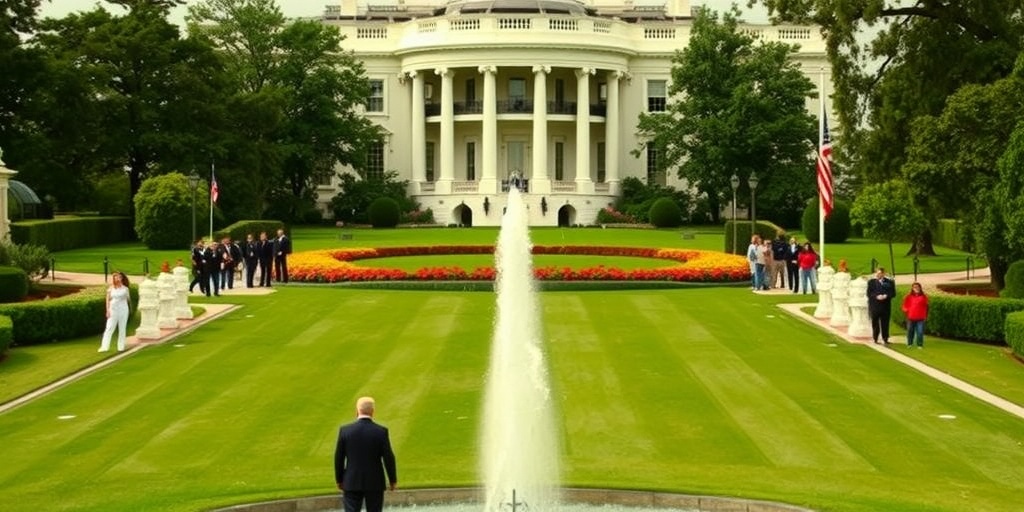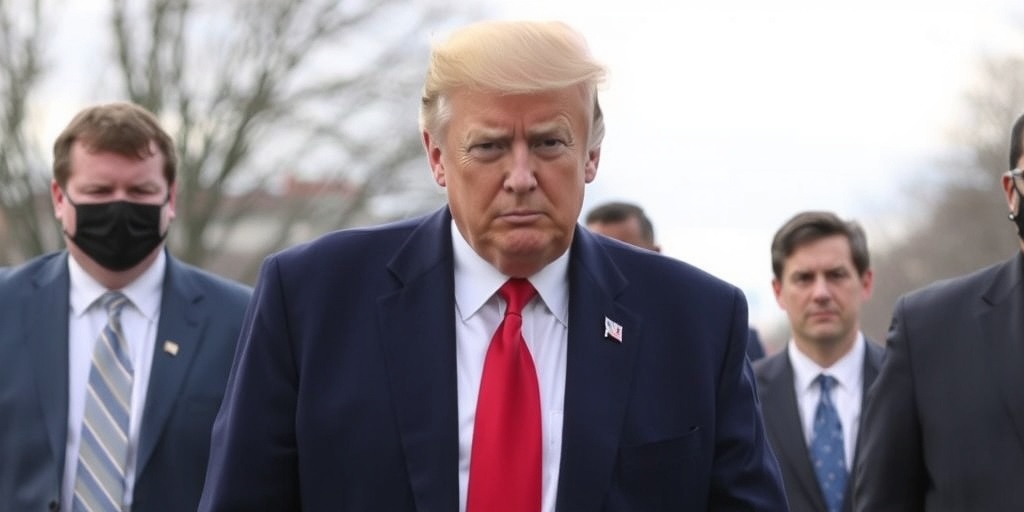Now Reading: Justice Barrett’s Key Vote in Trump Cases
-
01
Justice Barrett’s Key Vote in Trump Cases
Justice Barrett’s Key Vote in Trump Cases

Justice Amy Coney Barrett’s Unexpected Decisions Indicate Shifting Dynamics on the Supreme Court
Justice Amy Coney Barrett, the most junior member of the Supreme Court’s conservative supermajority, has been serving her role for just three full terms. However, her recent decisions may signal a decisive shift in the Court’s dynamics, especially as the justices navigate President Trump’s influential attempts to reshape the American government.
In a significant ruling made on a recent Wednesday, Barrett stood alone among the three justices appointed by Trump, voting against his emergency request to freeze foreign aid. This unexpected choice aligned her with the Court’s three Democratic appointees and Chief Justice John G. Roberts Jr., creating a narrow majority against the former president. This decision was not only provisional but also marked the beginning of a series of crucial tests regarding the limits of Trump’s presidential power.
The ruling indicates that Trump cannot rely on the Court to endorse every aspect of his executive authority expansion. It also attracted criticism from some of the president’s loyal supporters who take issue with Justice Barrett’s decision, reflecting her growing complexity as a justice.
Legal scholars have welcomed Barrett’s ruling, interpreting it as a commitment to enforcing the separation of powers—a principle that has occasionally been eroded by the executive branch’s influence on the conservative members of the Court. Payvan Ahdout, a law professor at the University of Virginia, emphasized that the Court’s majority seems open to reviewing Trump’s decisions, although the exact role of judicial review remains undefined.
Barrett appears to be approaching these disputes without a preset ideological lockstep that might close off potential limits on presidential power. In the most recent term, she emerged as the Republican appointee most inclined to endorse liberal outcomes. For instance, a five-justice coalition that ruled against Trump in the recent aid case had also previously rejected his request to avoid sentencing for 34 felonies linked to falsifying business records.
On other fronts, the Court has tackled cases involving Trump’s attempts to dismiss the head of an agency that protects whistleblowers. Although Barrett’s vote remained undisclosed in that instance, her non-participation in a dissenting opinion from another Trump appointee indicates a strategic alignment with her colleagues that does not always adhere strictly to party ideology.
Despite the relatively small number of recent rulings, these decisions have indicated that the majority of justices may scrutinize Trump’s more ambitious initiatives. For example, Barrett’s recent vote examined the president’s power to withhold funds mandated by Congress—a critical aspect of the executive branch’s budgetary authority, as highlighted by Harvard law professor Laurence H. Tribe. He noted that the conservative justices appear short of a consensus to allow presidential power to overshadow Congressional fiscal control.
In dissent, Justice Samuel A. Alito Jr. expressed astonishment that the Court would permit a lower court’s order against Trump’s proposed aid freeze to stand, even temporarily. This internal conflict among justices illustrates the complexities of their interpretations of executive power.
Barrett was hastily confirmed to the Court by Trump and Senate Republicans following Justice Ruth Bader Ginsburg’s death in September 2020. Her appointment came just prior to the presidential election, setting the stage for her future role within the judiciary. Before her elevation, Barrett served as a law clerk for Justice Antonin Scalia and was noted for her conservative legal perspectives, including a past dissent advocating for expanded Second Amendment rights.
However, Barrett’s recent decisions have led to backlash from some former supporters in conservative circles. Mark Levin, a conservative commentator, criticized Barrett for not aligning with traditional constitutionalist views, suggesting that she has become overly influenced by her judicial power.
Trump’s supporters have reacted strongly, with social media comments suggesting Barrett’s appointment was driven by her gender, perpetuating narratives that belittle her legal acumen. While some conservatives are perplexed by Barrett’s decisions, others exonerate her for contributing decisive votes in notable cases, such as the overturning of Roe v. Wade and limitations imposed on affirmative action.
Trump’s legal team remains confident in their requests for Supreme Court intervention, describing challenges against their actions as attacks on the separation of powers. However, the unsigned opinions from the Court indicate a cautious stance, allowing lower-court rulings against Trump to remain in place.
These recent happenings send a message to the public, demonstrating that the Court remains vigilant, even amid political complexities. This was underscored by Justice Barrett’s emphasis on the importance of complying with federal court orders, especially in light of discourse surrounding judicial independence.
Barrett’s votes in other recent cases have also shown her willingness to diverge from her conservative colleagues. For instance, her dissent in a 5-to-4 decision limiting the Environmental Protection Agency’s power to combat water pollution highlights a nuanced judicial philosophy.
The dynamics on the Court illustrate that even with a conservative majority, a fifth vote often hinges on Chief Justice Roberts. Historically viewed as an institutionalist, Roberts has navigated controversial waters, offering essential votes that have frustrated traditional conservative expectations, and has been vocal in affirming an independent judiciary untainted by political affiliations.
As for Trump, his rapport with the Court seems intact, despite an unsuccessful track record during his first term. After a recent congressional address, he expressed gratitude to Roberts, hinting at a continued trust that may be central to understanding the evolving relationships among the justices.
Justice Amy Coney Barrett’s trajectory demonstrates how an individual justice can unexpectedly influence the balance of power within the Supreme Court, carving a unique space that defies simple ideological categorization and shaking up the status quo established by former administrations.
Stay Informed With the Latest & Most Important News
Previous Post
Next Post
Previous Post
Next Post
-
 01New technology breakthrough has everyone talking right now
01New technology breakthrough has everyone talking right now -
 02Unbelievable life hack everyone needs to try today
02Unbelievable life hack everyone needs to try today -
 03Fascinating discovery found buried deep beneath the ocean
03Fascinating discovery found buried deep beneath the ocean -
 04Man invents genius device that solves everyday problems
04Man invents genius device that solves everyday problems -
 05Shocking discovery that changes what we know forever
05Shocking discovery that changes what we know forever -
 06Internet goes wild over celebrity’s unexpected fashion choice
06Internet goes wild over celebrity’s unexpected fashion choice -
 07Rare animal sighting stuns scientists and wildlife lovers
07Rare animal sighting stuns scientists and wildlife lovers





















